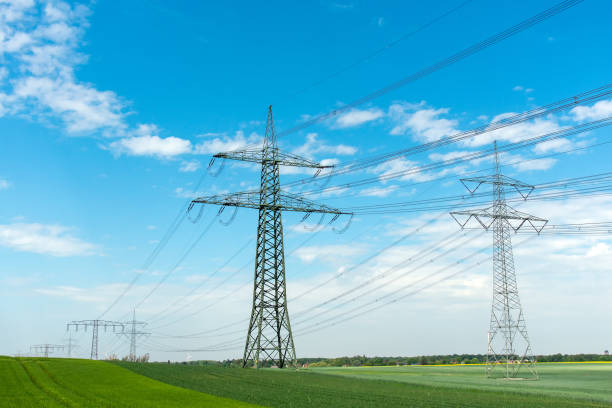Power cable monitoring solutions
Distributed fiber optic temperature sensing for overhead line monitoring
Distributed fiber optic temperature sensing for overhead line monitoring
Overhead lines are a common method of transmission and distribution in power systems, used to deliver electricity from power plants to various points of consumption. However, overhead lines are subject to various factors during operation, including ambient temperature, wind speed, solar radiation, etc., which can cause fluctuations in the line temperature. Excessive temperatures can lead to line overload, tower expansion, insulation aging, and even fires and equipment damage. Therefore, real-time monitoring and early warning of the temperature of overhead lines are of great significance.

Solution:
Fiber deployment:
Install distributed fiber optic sensors on the overhead lines, ensuring close contact between the fiber optic and the lines through clamping or suspension methods. The fiber optic sensors can be deployed along the entire length of the lines to cover temperature changes along the entire line.
Real-time monitoring:
Utilize distributed fiber optic temperature sensing technology to monitor the temperature changes of the overhead lines connected to the fiber optic sensors in real-time. The fiber optic sensors distributed along the lines provide temperature distribution information of the entire line. Temperature data can be collected and recorded in real-time through the monitoring system.

Temperature alerts and anomaly detection:
Set predefined temperature thresholds, and when the line temperature exceeds the threshold, the monitoring system triggers temperature alerts and anomaly alarms. This can be achieved by comparing real-time temperature data. Alerts and alarms can be communicated to maintenance personnel through sound, light signals, or remote notifications.
Fault localization and maintenance:
By analyzing the temperature data captured by the sensors, the exact location of temperature anomalies can be accurately determined, aiding in fault localization. Maintenance personnel can promptly respond and take necessary repair measures based on the localization results to prevent further damage or failure.

Distributed fiber optic temperature sensing technology plays a crucial role in overhead line monitoring as it enables real-time monitoring of line temperature variations, timely detection of temperature anomalies, and provides early warnings. This helps maintenance personnel to take prompt actions, ensuring the safe operation of overhead lines and reducing the risk of potential faults. Furthermore, the advantages of distributed fiber optic temperature sensing technology include flexibility, resistance to interference, and remote monitoring capabilities, making it suitable for monitoring a wide range of overhead line environments.





